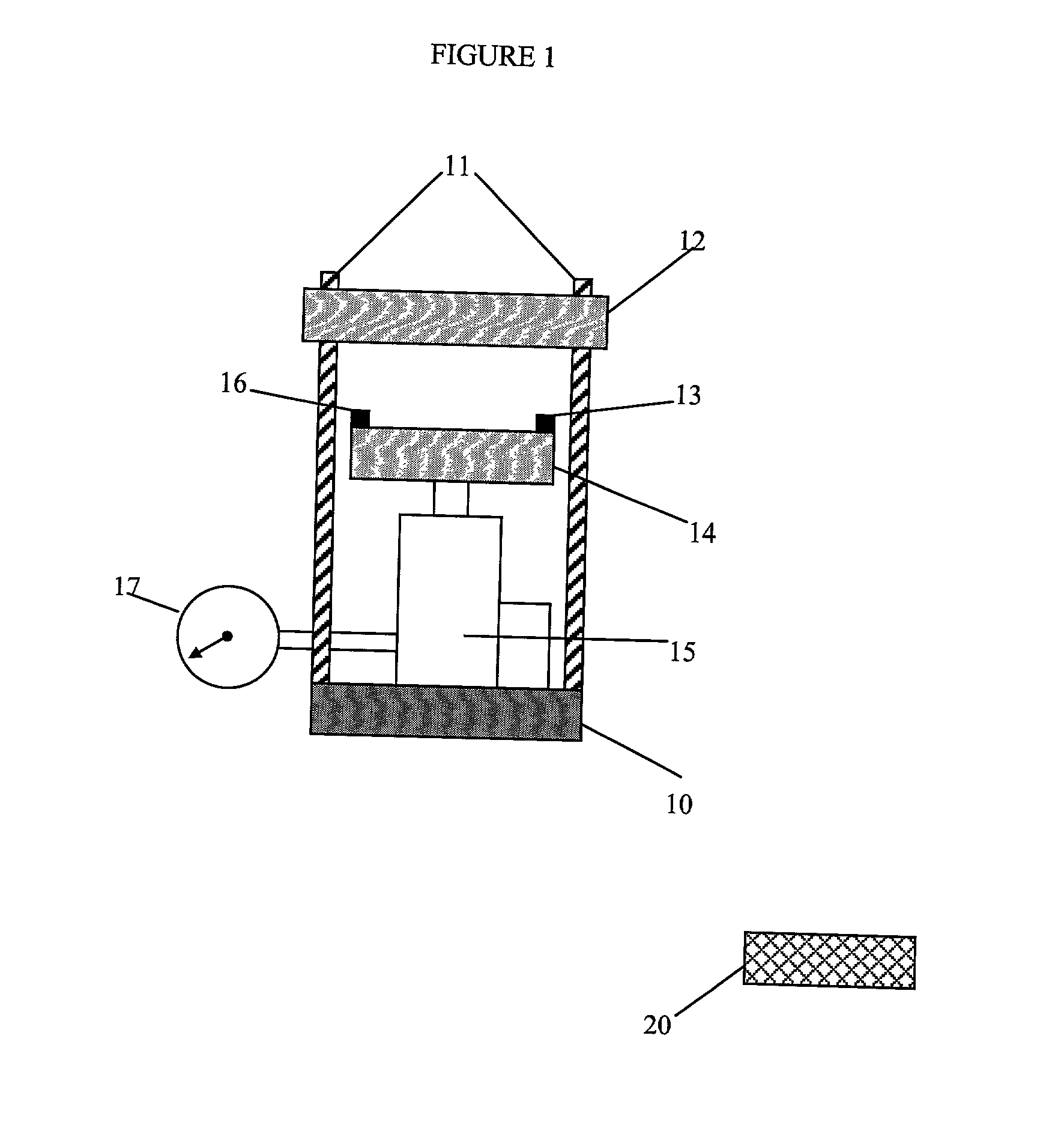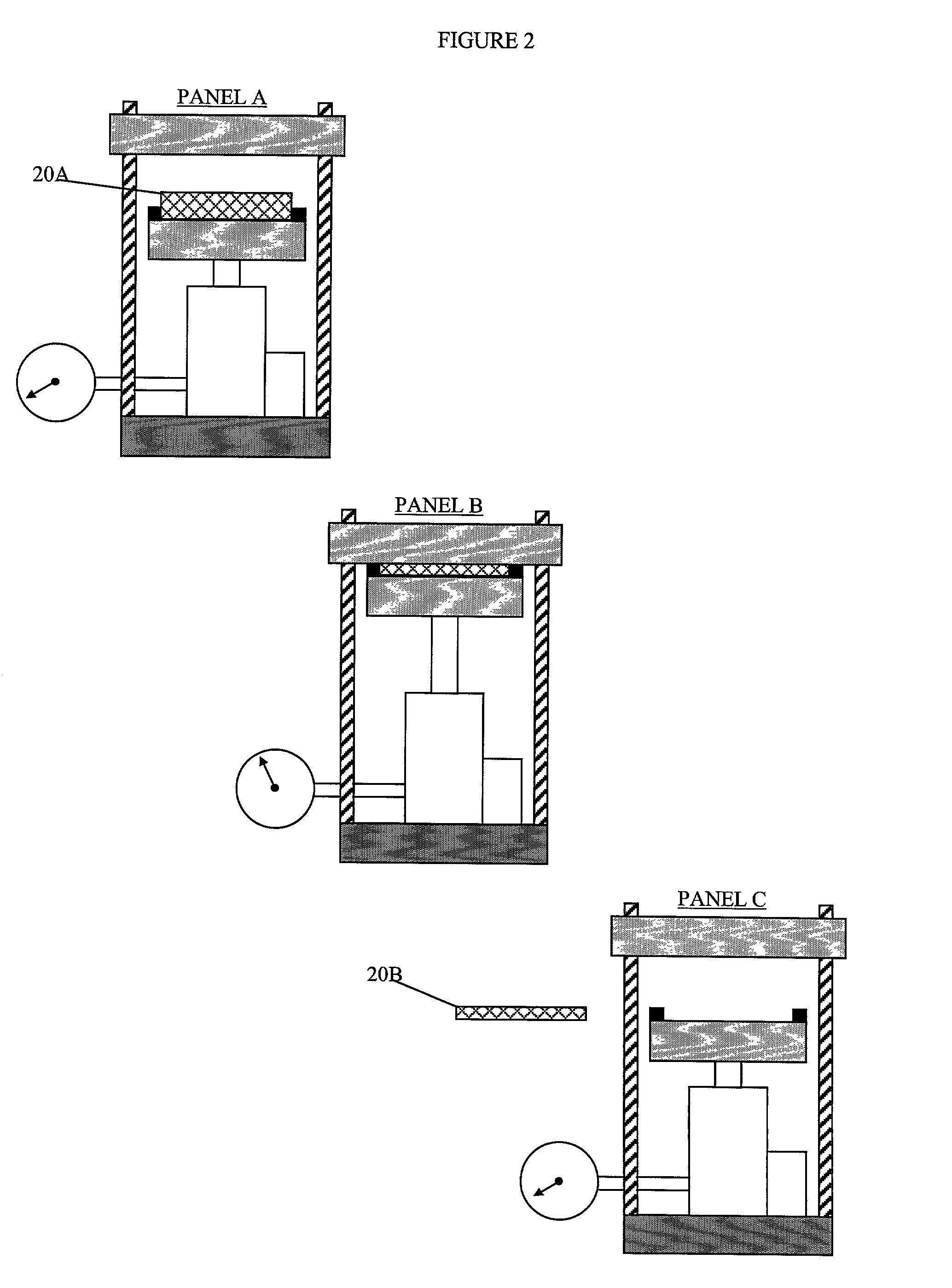Method for controlling thermohysteresis during thermoforming of three-dimensional fibrous compound constructs and the product thereof
a three-dimensional fibrous compound and thermoforming technology, applied in the field of three-dimensional construction, can solve the problems of reducing the range of suitable base materials, adversely affecting the weight penalty of a substantially solid construction, and components that have a significant thickness, and the formation of foams at the cost of hazardous and toxic gases
- Summary
- Abstract
- Description
- Claims
- Application Information
AI Technical Summary
Problems solved by technology
Method used
Image
Examples
example 1
[0047] A thermoformed material fabricated by the present invention comprised a layered fibrous pre-form as described in Comparative Example 2, whereby the layered fibrous pre-form was initially heated at 180.degree. C. for 4.25 minutes, then cooled to 22.degree. C., then layered as described. The entire layered fibrous pre-form with thermal isolation layers was elevated to the temperature of 180.degree. C. for 7 minutes before molding. Spacing shims of 7.3 mm were employed to compensate for the additional thickness of the two thermal isolation layers and, again, a compression duration of 2.0 minutes was employed.
example 2
[0048] A thermoformed material fabricated by the present invention comprised a fibrous pre-form as described in Comparative Example 4, whereby the fibrous pre-form was initially heated a 180.degree. C. in a convection oven for 4.25 minutes. The heated pre-form was then compressed in excess of 1000 pounds per square inch on 5.0 mm key-stock shims for 1.75 minutes. The compressed pre-form was then allowed to cool to 22.degree. C. under ambient conditions. The cooled, compressed fibrous pre-form was then compressed on 5.0 mm shims between heated platens, the platens being at about 190.degree. C., for a duration of 1.0 minute.
example 3
[0049] A thermoformed material similar to Example 2, whereby the heated pre-form was instead compressed using 7.2 mm key-stock shims followed by cooling and hot press forming on 5.0 mm shims.
PUM
| Property | Measurement | Unit |
|---|---|---|
| length | aaaaa | aaaaa |
| length | aaaaa | aaaaa |
| temperature | aaaaa | aaaaa |
Abstract
Description
Claims
Application Information
 Login to View More
Login to View More - R&D
- Intellectual Property
- Life Sciences
- Materials
- Tech Scout
- Unparalleled Data Quality
- Higher Quality Content
- 60% Fewer Hallucinations
Browse by: Latest US Patents, China's latest patents, Technical Efficacy Thesaurus, Application Domain, Technology Topic, Popular Technical Reports.
© 2025 PatSnap. All rights reserved.Legal|Privacy policy|Modern Slavery Act Transparency Statement|Sitemap|About US| Contact US: help@patsnap.com



